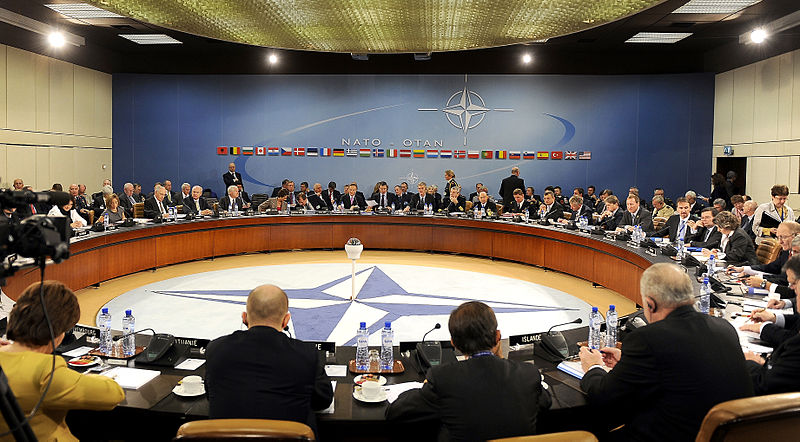Sweden officially joined the North Atlantic Treaty Organization (NATO) on March 7th, 2024, ending decades of neutrality amid soaring concerns about Russia’s aggression in Europe following its invasion of Ukraine. The decision to join this military alliance, rooted in the wake of Russia’s aggressive maneuvers in Eastern Europe, reflects a dramatic shift in Swedish security strategy and public sentiment, underpinned by a recalibration of national defence priorities in an increasingly uncertain world.
For generations, Sweden’s commitment to military neutrality stood as a cornerstone of its national identity, shaping its role on the global stage as a mediator and advocate for peace. However, the annexation of Crimea by Russia in 2014, along with escalating tensions in Eastern Europe, significantly altered the security dynamics around Sweden. This development was perceived not only as a threat to the stability of the Baltic region, where Sweden has significant interests, but also as a blatant violation of international law, undermining the norms governing state sovereignty and territorial integrity. These events compelled a critical reevaluation of Sweden’s long-standing stance on neutrality, driving a shift in public opinion and political consensus towards greater integration with Western defence structures and closer ties to NATO. The growing perception of a Russian threat has thus underscored a critical juncture for Sweden’s security doctrine, signalling a pivot from its historical military neutrality towards embracing collective security measures as part of its defence strategy.
Sweden’s journey toward NATO membership was neither abrupt nor impulsive but a strategic evolution influenced by decades of careful engagement with the alliance. Sweden gradually aligned its defence policies and capabilities with NATO through partnerships and cooperation agreements while maintaining a cautious distance. This relationship deepened in response to the heightened Russian threat, culminating in Sweden’s decision to adopt the “Total Defence” model, aimed at ensuring a comprehensive national defence strategy. These efforts, aimed at enhancing interoperability with NATO, positioned Sweden as a prime candidate for full membership, signalling a readiness to integrate into the alliance’s collective defence framework.
The implications of Sweden’s accession to NATO extend far beyond its borders, reshaping the security landscape of the Baltic Sea region and offering a counterweight to Russian influence. This strategic enlargement of NATO not only strengthens the alliance’s military capabilities but also serves as a deterrent to aggression, underscoring the collective resolve of Western democracies. The accession has elicited reactions from global powers, with Russia particularly vocal in its criticism, signalling potential “military-technical” responses to what it perceives as a challenge to its security. This development marks a significant shift in the strategic calculus of the region, with potential ramifications for the broader geopolitical dynamics involving NATO, Russia, and China.
Sweden’s NATO membership represents a new chapter in its security policy, characterized by a commitment to unity, solidarity, and the shared responsibilities of alliance membership. As articulated by Prime Minister Ulf Kristersson, this move reflects a strategic necessity born out of the current security challenges and the need for a collective defence posture. It is a testament to the changing nature of international relations, where the principles of freedom, democracy, and the rule of law stand as the bedrock of security and cooperation among nations.
Sweden’s strategic alignment with NATO is underscored by its significant military capabilities, particularly in the air and maritime domains. The nation’s enhanced commitment to defence spending, which is set to increase by SEK 27 billion from 2023 to 2024, positions Sweden to meet NATO’s spending target of 2% of GDP. This financial dedication supports a doubling of military expenditures since 2022, ensuring robust funding for defence initiatives. Hence, Sweden will significantly boost NATO’s military strength, especially in the strategically vital Baltic Sea Region. Former Swedish Prime Minister Carl Bildt has projected that over 250 fighter jets could patrol this area once Sweden and Finland fully integrate their fleets into NATO operations.
Furthermore, the island of Gotland is poised to become a critical forward operating base for NATO. Its strategic location in the heart of the Baltic Sea, proximate to the Russian province of Kaliningrad, enhances the alliance’s defensive posture and operational readiness in northern Europe. Also, Sweden’s integration into NATO significantly enhances the security dynamics of the Baltic region, particularly in relation to its neighbours Finland, Norway, and the Baltic states. With Sweden and Finland joining NATO, the alliance gains a more robust capability to manage and secure the northeastern European flank against potential aggressions. The strategic use of Swedish and Finnish territories enhances NATO’s logistical and defensive posture, enabling better management of airspace and maritime territories critical to regional security. This expanded geographic coverage also improves NATO’s capacity to respond swiftly and effectively to threats, underscoring the importance of regional cooperation.
In embracing NATO membership, Sweden navigates a transformative path, aligning its defence and foreign policies with the realities of a new security environment. This historic decision underscores a strategic goal towards collective defence and represents a significant contribution to the stability and security of the Euro-Atlantic area.
Edited by Bill Lin

